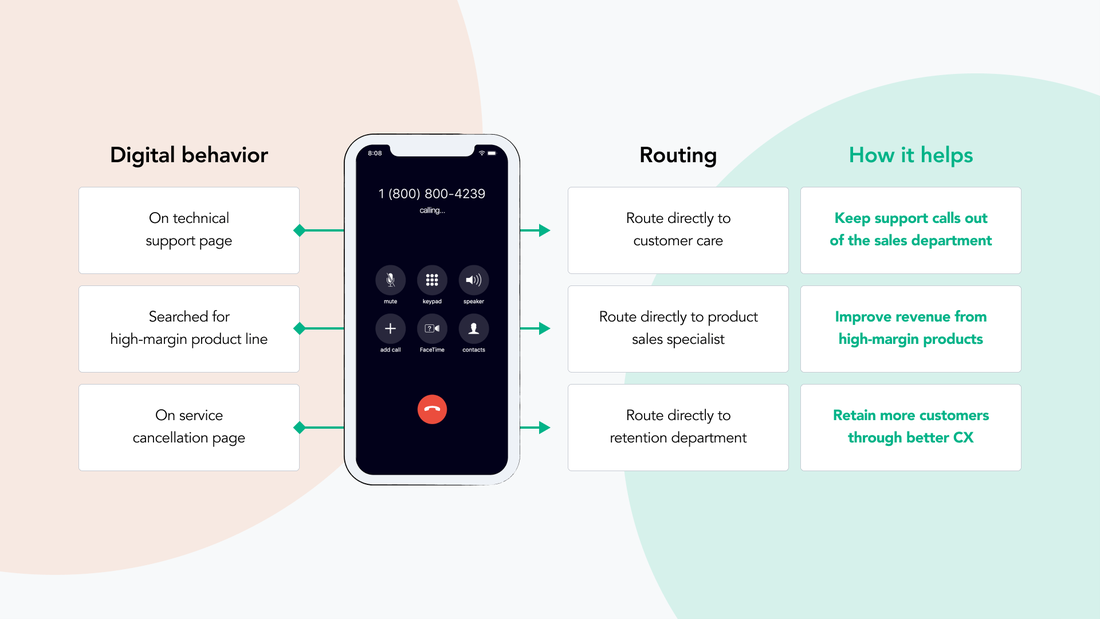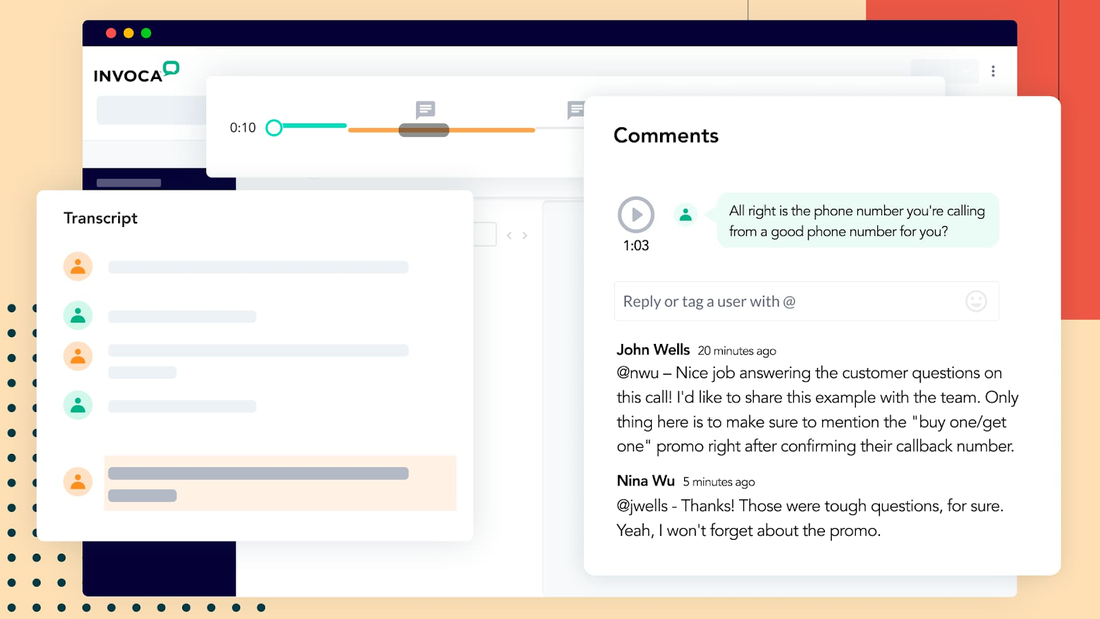
Today’s marketers have more data about their consumers at their fingertips than ever before. Marketers who use these insights to create a data-driven strategy drive the best results. Consider these statistics:
In this post, we’ll break down the definition of data-driven marketing, current trends, the data you need to create a data-driven marketing strategy, and how you should update your approach.
Data-driven marketing is a marketing strategy that uses data — acquired through consumer interactions and third parties — to gain a better view into consumers’ motivations, preferences, and behaviors. Marketers then create personalized messaging and experiences that deliver the highest possible return on investment (ROI).
Data-driven marketing has a myriad of benefits. It allows your team to get clarity about what your prospects truly value and use that information to convert them to customers. You’ll also have all the background information you need to understand why your campaigns were successful, or why they underperformed. Utilizing data-driven marketing removes the guesswork and allows you to make informed decisions about the strategies you choose to mobilize.
Data-driven marketing can also help you personalize your messaging to make your product or service feel more authentic. Customers tend to respond better to messaging that feels like it was meant JUST for them rather than generic ad copy.
The foundation you create for collecting, filtering and eventually maintaining your data may seem daunting at the beginning of the process, but it will pay off immensely down the road if you invest in the proper infrastructure and personnel. Collecting data sounds simple enough, but the quality and relevance is vital as well. Do your homework and make sure the data sources you’re relying on are reliable. You also need to ensure you adhere to all the new data regulations going into effect, like CCPA and GDPR.
It’s important to tread lightly when using customer information—especially if it isn’t something they provided knowingly through their interactions with your brand. You don’t want them feeling as if their privacy was invaded. Try some A/B testing with the different types of information you’ve gathered on a sample of your customers to see how the rest would most likely respond. Once you’ve made the right tweaks, you’ll be more confident to launch your campaign at full scale.
64% of marketing executives “strongly agree” that data-driven marketing is crucial in today’s landscape. Below are some of the most important trends to consider when forming your strategy.
Regulations like GDPR and the California Consumer Privacy Act have cut down on marketers’ ability to capture and use third-party data. In addition, Firefox, Safari, Bing, and Chrome, which together control over 90% of the browser market share, have each stated that they intend to tighten privacy restrictions in the future.
In response, marketers are turning to first-party data — data that they’ve captured from their own audience. As restrictions on third-party data continue to tighten, first-party data will only become more important.
Today’s consumer journey is more fractured than ever before. In fact, a recent study from Google found that today’s consumer journey can have between 20-500 touchpoints, depending on the complexity of the purchase.
In addition, consumers have higher expectations for their experiences than ever before. It’s critical that your data-driven approach unifies disparate channels and creates a cohesive brand experience for each consumer. Failing to do so will lose you their business.
This makes it doubly important to have proper attribution for your marketing channels and touchpoints. With so many different brand interactions happening in each consumer journey, you need to isolate which marketing programs are truly moving the needle and impacting revenue so you can invest more heavily in them.
As marketers capture first-party data from more touchpoints than ever, consumers expect great experiences in return. In fact, 80% of customers are more likely to purchase a product or service from a brand that provides personalized experiences.
It’s critical that your data-driven approach unifies disparate channels and creates a cohesive brand experience for each consumer. Failing to do so will lose you their business.
In 2023, you can’t rely on unrequited brand loyalty. Marketers have to ensure that they deliver a seamless experience to every customer on every channel — otherwise, they’re only a click or call away from choosing a competitor. In a recent study, 32% of customers said they stop doing business with a brand they love after only one bad experience.
The phone call experience, in particular, can make or break brand loyalty. If you quickly connect consumers to the right person to meet their needs, you’ll be more likely to win their business. If you keep them waiting, you may lose them forever. In fact, 59% of customers hang up within 10 minutes of being placed on hold.
Integrating your marketing data tools will give your entire department a single source of truth. When you want your prospects to follow a certain path to become customers, integrating your tools will allow you to guide them more seamlessly. Your department will be better aligned because the information they’re relying on is centralized. Integration also helps eliminate data silos because it makes it easier to understand how your initiatives are performing, how the budget is being allocated, and how effectively your resources are being utilized.
To scale personalization, marketers are depending more on AI and marketing automation. Leading marketers are leveraging AI for everything from optimizing ad bidding to targeting audiences to personalizing web experiences to capturing insights from phone conversations at scale. If you’re not investing in AI now, you’ll soon be left behind.

As mentioned above, with recent third-party data restrictions, marketers are shifting to first-party data sources. In fact, a recent survey found that 82% of marketers plan to increase their use of first-party data.
Below are some of the most valuable sources of first-party insights that data-driven marketers are leveraging in 2023.
Customer relationship management (CRM) platforms like Salesforce are a powerful source of insights. A CRM gathers customer interactions across all channels into one centralized location. With CRM data, you can segment your audience based on all their past interactions with your brand and tailor their experiences to align with their journey and buying intent.
Web analytics tools like Google Analytics and Adobe Analytics capture data about consumers’ interactions on your website. With this information, you can personalize their experiences based on the pages they visited and online goals they completed.
Similar to your website, your mobile app can give you deep insights into your consumers’ interactions with your brand. Google Analytics 4 offers new features that make it easier than ever to capture mobile app data. You can now see how users spend their time on your app, their favorite features, common conversion paths, and much more. You then can use this data to optimize your app’s performance and personalize user experiences.
Capturing and leveraging data from transactions is critical. By understanding what consumers have purchased, you can predict what they would be inclined to purchase in the future and tailor their experience accordingly.
In addition to understanding consumers’ online interactions with your brand, it’s critical to understand how they’re engaging with you over the phone. Call tracking and conversation intelligence solutions like Invoca connect each phone call to the marketing source that drove it, so you can understand the messaging and channels driving calls. Invoca also uses AI to analyze the content of conversations at scale, so you can understand if it was a sales lead, the caller’s buying intent, the caller’s urgency, if the caller converted, and more. These fill a critical blind spot and allow you to personalize consumer experiences based on phone conversations — in addition to online interactions.
You can integrate call tracking and analytics data with CRMs like Salesforce, web analytics platforms like Google Analytics and Adobe Analytics, as well as a host of other tools in your martech stack.

Have you ever purchased a product and then been targeted, all across the internet, with ads for that product? This poor experience not only annoys customers, but it’s also a waste of valuable ad spend.
To avoid this mistake, and to ensure you’re targeting consumers as accurately as possible, you should capture all your customer data in a centralized location, like a CRM. This way, you’ll be able to target them based on every touchpoint they engage with as they move through the funnel.
With this complete view of each customer, not only will you avoid serving irrelevant ads, you’ll also be able to target more precisely. For example, if you integrate call tracking and analytics data into your strategy, you can target callers with ads based on the content of their phone conversations. If a caller expressed interest in a particular product but didn’t convert, you could retarget them with ads for that product. If they expressed urgency, you could increase your bidding to ensure consumers with the highest purchase potential are seeing your ads. If they bought a product or service, you could target them with ads for a relevant companion purchase, or exclude them from seeing ads to conserve spend.
Email is an effective channel to reach your existing customers and those who’ve made accounts on your website or subscribed to your content — and it’s free. But to effectively utilize it, you need to accurately segment your contacts. This can be best achieved in a CRM.
You can segment your audience in a variety of ways, depending on your marketing goals. For example, if you’re a lawn care provider, you could segment your audience based on their past purchases. If they purchased a basic fertilization package, you could target them with emails promoting a complete package that includes aeration, insect control, weed control, and more.
You could also segment your audience based on when they purchased from you. Certain lawn care services need to be performed seasonally or at regular intervals, and you could target them with emails promoting the right services at the right times.
Another strategy is to use your call tracking and analytics data to segment your audience based on the content of their phone conversations. Continuing with the lawn care example, if callers asked about a “total care” package but didn’t convert, you could retarget them with emails for that service. If they expressed price sensitivity, your emails could include a limited-time discount code.
Your web visitors have engaged with your website in different ways and are at different stages of the funnel. Each should receive a dynamic website experience tailored to their needs and past interactions.
A common example of this is using visitors’ past history on your website to populate a custom “Recommendations” carousel. This way, products they’ve recently viewed or companion products for their purchases will show up front and center on your webpages. You can also make more complex optimizations, like adjusting site copy and images to align with their interests and intent.
You can also use other data sources to inform website personalization. For instance, you can optimize consumers’ website experiences based on what they said on phone conversations. To do this, you can push call tracking data into website optimization platforms. You can then set up people-based website personalization rules for certain phrases or data points that occurred in the conversations. The optimization tools will, in turn, deliver website personalized experiences that align with phone conversations — at scale.
For example, if you’re an auto dealer, you can populate your homepage with an image of the vehicle the buyer expressed interest in over the phone, but did not schedule a test drive for. To sweeten the deal, you could add a special financing offer.
 Custom website header image featuring the Nissan Rogue
Custom website header image featuring the Nissan RogueIn addition to using data-driven processes to improve online experiences, it’s critical to apply these same principles to call experiences. Each caller has different needs and buying intent — you should quickly connect them with a relevant agent who is equipped to meet their needs and convert them. Failing to do so could cost you their business.
To execute this strategy, marketers are using dynamic call routing rules, which automatically route callers based on certain criteria. Below are some common call routing optimizations:

Marketers are also using AI-powered reports to evaluate how well their locations are answering and converting calls. These reports, generated by a call tracking and analytics solution, show the sales calls driven to each location, the lead score of the calls, the call conversion rates, and the percentage of calls that go to voicemail. They can then use that data to coordinate with sales to improve call experiences at their locations.
When revenue goals aren’t met, marketing and sales teams often point fingers at each other. Marketing may say it was driving quality leads but sales was fumbling them, while sales may say those leads weren’t so hot to begin with. To solve this common problem and improve collaboration, marketers and sales teams are using conversation intelligence solutions.
With conversation intelligence, marketers can quantify not just the number of calls their campaigns drive — but the quality of those calls. They can then share this data with the sales team to improve transparency and accountability.
Sales teams can use solutions like Invoca to see how many qualified phone leads agents are converting. They can also use the recordings and transcriptions to understand how they can help agents and business locations improve their performance. This helps them make the most of the valuable phone leads marketing is sending.
 Sample Invoca sales agent scorecard. Request a demo to see more.
Sample Invoca sales agent scorecard. Request a demo to see more.With conversation intelligence, marketing and sales teams have a unified view of the call channel that they can use to drive stronger collaboration, better experiences, and, ultimately, more revenue.
To learn more about how call tracking data can enhance your marketing strategy, download our Ultimate Guide to Conversation Intelligence. Want to see Invoca in action? Request your personal walkthrough.

The original version of this page was published at: https://www.invoca.com/blog/state-of-data-driven-marketing-update-your-strategy
Invoca for Healthcare enables healthcare providers to capture detailed analytics on a new patient’s full journey. This includes the marketing campaign that drove initial interest, the specific webp... Read more
Between tightening media budgets, dwindling resources, and shrinking teams, marketers are facing an unprecedented uphill battle. It can seem like the only thing that is ramping up ...read more
The healthcare industry has experienced a massive amount of change in the last several years. The pandemic created a seismic shift in how patients expect healthcare to be delivered, ...read more
COVID-19 has caused radical shifts in the way patients engage with healthcare providers. To thrive in 2023, healthcare marketers need to anticipate future trends and adapt their strategies ...read more
Data-driven marketers have their online conversion funnel down to a science. They know exactly how many clicks their paid search campaigns are generating, how many of those clicks ...read more